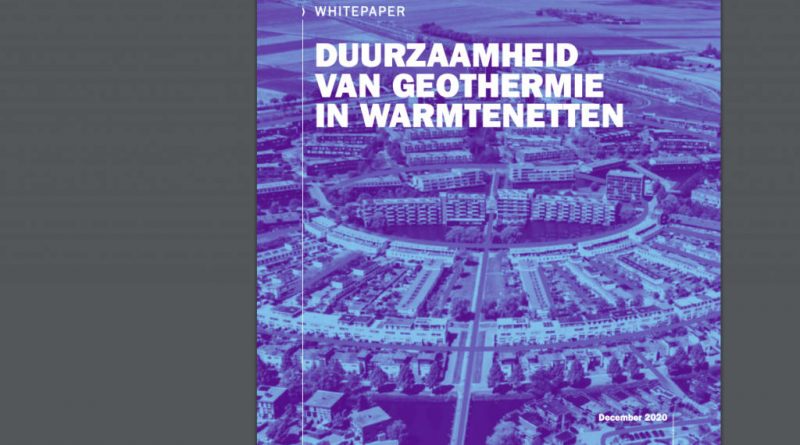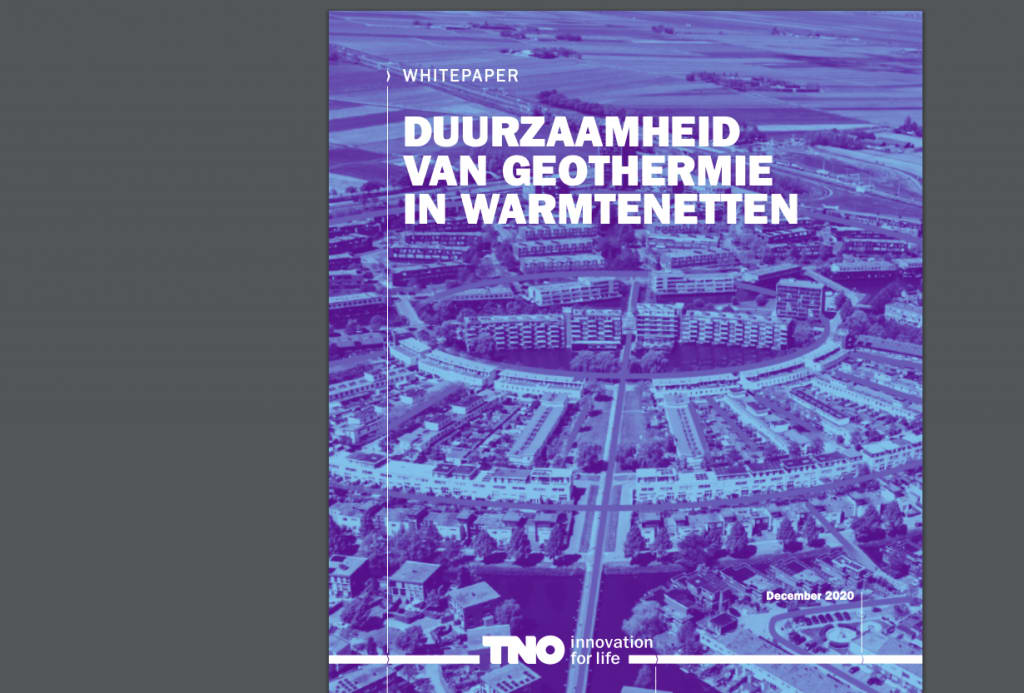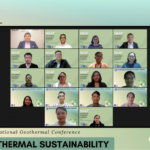TNO whitepaper – Sustainability of geothermal energy in heat networks
Energy Disrupter
Dutch research organisation TNO has released an interesting whitepaper on the sustainability of geothermal energy for heating networks. While in Dutch it provides a great overview and evaluation in the context of geothermal use for heating in the Netherlands (and beyond).
Geothermal energy is seen as one of the cleanest and cheaper sources of sustainable heat. That is why geothermal energy will play a substantial role in the energy transition, especially to heat houses and buildings as a replacement for fossil natural gas. But how much CO2 emissions do a geothermal source and the heat networks actually produce? This is what Dutch applied scientific research organisation TNO has explored through research and did summarize the facts in the whitepaper “Sustainability of geothermal energy in district heating networks” . Compared to a natural gas boiler, the CO2 emissions of a geothermal source are now about 90% lower, while a heat network with geothermal energy as a source emits 60% less CO2.
In 2030, 1.2 million homes must be connected to a heat network. Now there are about 400,000. Geothermal energy is one of the potential sustainable heat sources for this. It has been agreed in the Climate Agreement that the total CO2 emissions from heat networks in 2030 may be an average of 18.9 kilos of CO2 per gigajoule (kg / GJ), seventy percent less than central heating boilers do now (63.5 kg per GJ). In the proposal for the new Heat Act, the standard for 2030 is 25 kilos of CO2 per gigajoule per heat network.
Geothermal emissions
In the whitepaper TNO calculates how high the CO2 emissions of a geothermal source and a heat network are. There appear to be 4 sources of CO2: the geothermal source itself (by-catch of methane), the pumps that raise the hot water, the co-firing of natural gas at peak times and the compensation of heat losses in the heat network.
The extraction of geothermal energy releases methane, so-called ‘by-catch’. This is incinerated and provides 2.2 to 7.4 kilos of CO2 per gigajoule of heat produced (depending on the stratum / reservoir from which the geothermal energy is produced).
The pumps that raise the hot water also emit CO2, which brings the total emissions for the geothermal source to 4.3 to 8.6 kg per GJ, approximately 90% lower than the emissions from a central heating boiler. Incidentally, the emissions from the pumps will cease when the electricity mix is ??fully sustainable.
Legal Norms
In addition to emissions from the geothermal source, a heat network with geothermal energy also releases CO2 from other sources. During peaks in the demand for heat, co-firing with natural gas is still inevitable. In addition, there are heat losses in the heat network, which mean that more heat must be extracted from the source. This does not in itself cause CO2 emissions, but it does increase the total emissions of the system.
The white paper calculates that peak load facilities and transport losses account for 70 to 83 percent of the total CO2 emissions from the heating system. With 20-24 kilos of CO2 per gigajoule produced (approximately 60% less emissions than a central heating boiler), the heat networks at system level do not automatically meet the standard of 18.9 kg CO2 per gigajoule produced as set for 2030.
The grids in the cases calculated for 2030 do however remain within the margin of 25 kg CO2 per gigajoule mentioned in the draft Heat Act. Maurice Hanegraaf, geothermal researcher at TNO: “Geothermal energy is already one of the cleanest heat sources for heat networks. Our research shows that with a number of measures CO2 emissions can be further reduced and a CO2 neutral collective heating system is possible. ”
Recommendations
TNO makes various recommendations to optimize the geothermal energy source and heat networks in order to meet the requirements of the Climate Agreement and Heat Act, which must take effect on 1 January 2022.
The most important options with regard to the source are limiting the bycatch through, for example, re-injection, upgrading to natural gas quality or capturing the CO2. In the heat network, sustainability is possible by co-firing with green alternatives (such as hydrogen, biomass or green gas) and specific measures to minimize heat losses in the network.
Frank Schoof, chairman of Stichting Platform Geothermie-: “This report shows that heat networks with geothermal energy, with a sustainable supplement for peak demand, provide a heat network that meets all sustainability standards. The research finally clarifies the fact that geothermal energy is an indispensable component for a sustainable heating network.”
TNO held a webinar on geothermal energy as a source for heat networks on Thursday 17 December.
Source: TNO

















